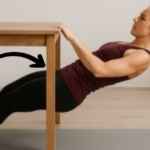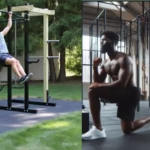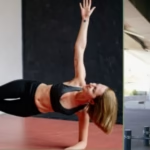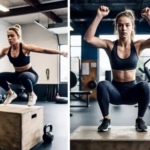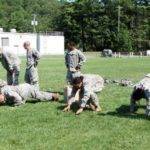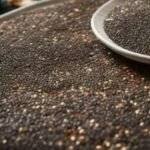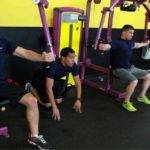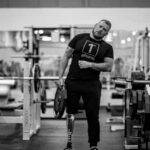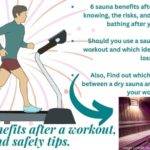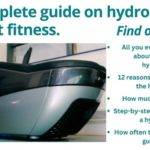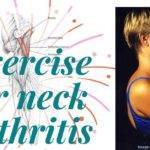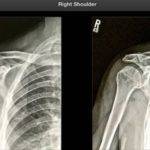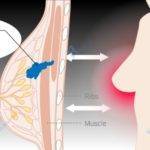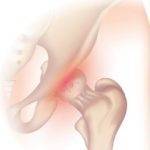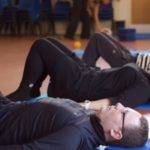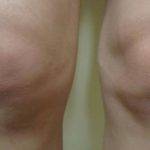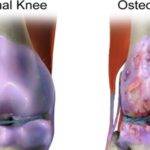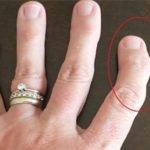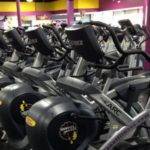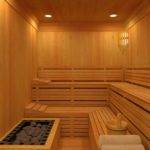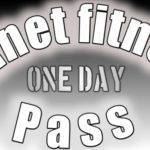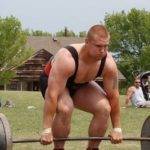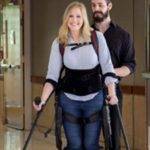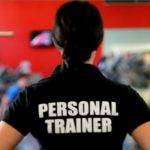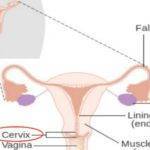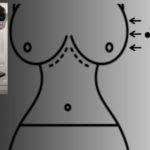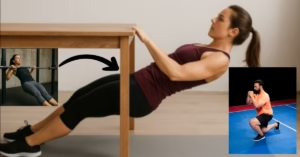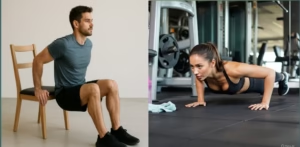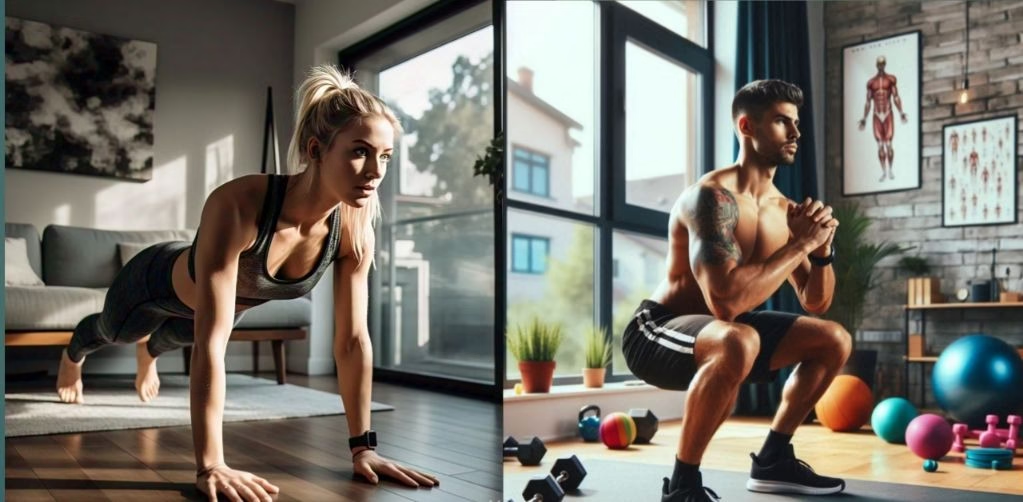
Table of Contents
As a form of exercise, calisthenics involves the use of body weight as resistance towards building muscle strength, bulk, flexibility, and coordination. The best part is you can do it from the comfort of your home without the need for special gym equipment or gadgets as we’ll discuss in this article.
Engaging in a calisthenic at-home workout has proven to be a time-efficient way of achieving your fitness goals at no cost to you. Additionally, nothing can be more convenient with this practice as compared to the use of a gym to which you must create a special time to show up.
In previous articles, we discussed exhaustively on burpees which is one of the most common and effective types of calisthenics. In this write-up and a couple of subsequent ones, we’ll throw light on other forms of calisthenic workouts anyone can try out.
Do keep in touch by signing up for our newsletter:
Calisthenic at-home workout without equipment.
Since calisthenics, as described above, are exercises done with your body weight rather than external weights, the idea of calisthenics without any equipment is no no-brainer. One of the primary advantages of these exercises is their ability to enhance cardiovascular health while also facilitating strength-building and exercise endurance.
The following exercises are fundamental components of an effective calisthenic routine at home:
Push-ups: These are cornerstone exercises that target the chest, shoulders, triceps, and core muscles. To perform a push-up, begin in a plank position with your hands directly beneath your shoulders. Lower your body until your chest nearly touches the floor, then push back up to the starting position.
Squats: They work the legs and glutes. To squat, stand with your feet shoulder-width apart, then lower your body as if sitting back into a chair and return to standing while keeping a straight back the whole time. This exercise is beneficial in Improving the quality of life as per the Journal of Strength and Conditioning Research.1
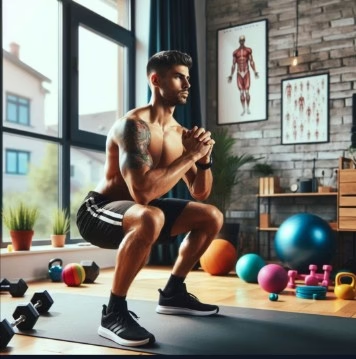
Lunges: Lunges are excellent for developing balance and coordination while engaging the lower body muscles. To perform a lunge, step forward one leg and lower your hip until both the backward and forward knees reach about 90-degree angles as shown in the image below.
Plank: It is for core strengthening and the position you assume in a horizontal plain during push-ups. You may choose to support yourself either by placing your hands or the elbows on the ground directly under your shoulders.
Burpees: They are a combination of several calisthenic exercises in one workout and have different variations and alternatives tailored to different fitness levels and purposes.
Burpees involve jumping into the air, dropping into a squat, kicking your feet back into the plank, completing a push-up, and returning to the squat position before jumping up again.
Each of these exercises can be performed on an exercise mat to enhance comfort and stability. By incorporating variations and modifications, people at all levels of fitness can participate in these no-equipment workouts.
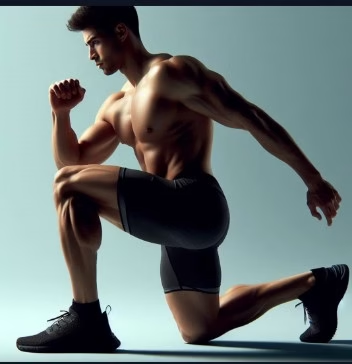
Calisthenics at-home workout plan.
The implementation of a structured calisthenic at-home workout plan can significantly improve one’s fitness level and body composition. The plan should be tailored for varying skill or fitness levels such as beginner, intermediate, and advanced groups based on the following 3 main metrics:
- The frequency of workouts,
- Workout duration, and
- The type of exercise.
1. Beginners: The recommendation is to engage in calisthenic workouts four times a week for about 20 to 30 minutes per session. Exercises should focus on basic movements like push-ups, squats, and lunges, and supplemented by core exercises like plank or leg raises.
2. Intermediate: These group can increase their workout frequency to 5 days a week with sessions lasting for 30 to 45 minutes. This level should be for harder variations of the basic exercises such as diamond push-ups and jumping squats to elevate performance and endurance. Also, integrated short bursts of cardio such as Burpees will expedite fat burn.
3. Advanced: A 6-day workout schedule lasting 45 to 60 minutes is advisable for this group. The plan should consist of complex movements such as muscle-ups, handstands, and explosive exercises to maximize muscle building and strength. Varying the routine regularly helps to prevent stagnation and keeps workouts exciting.
It is important to track progress methodically, noting improvements in repetitions, sets, or even the duration of rests. Documenting these metrics can bolster motivation and adaptability within the calisthenics at-home workout plan.
Calisthenics at home for beginners.
For beginners, embarking on a calisthenics at-home workout journey can seem daunting, however, understanding its fundamentals can alleviate this feeling. Two basic principles you must observe are warm-ups and cool-downs.
- Warm-ups: A proper warm-up of 5 to 10- minutes warm-up increases your heart rate and boosts blood supply to the muscles, preparing them for the workout ahead. This reduces the risk of injury. Simple activities such as dynamic stretching or light jogging in one place can serve as an effective warm-up.
- Cool-downs: This 5 to 10-minute phase performed at the end of your workout helps promote flexibility and aids recovery. It may involve gradually reducing the tempo of your exercise and ending with static stretching though the benefits don’t seem to apply to every individual according to research.2
Setting realistic fitness goals is necessary when beginning a new workout routine. Start with achievable objectives such as performing a specific number of push-ups or increasing the duration of the plank hold in your exercise session.
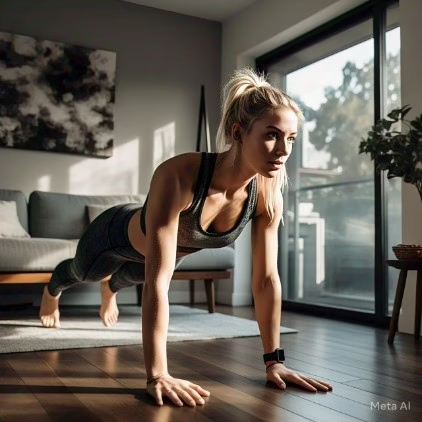
Monitoring progress can help foster motivation and provide a sense of accomplishment as you build your fitness level or athletic capabilities. Safety should always be a priority as well. Be conscious of your body’s limits and avoid the temptation to push through pain.
Mistakes such as poor form or attempting overly advanced exercises too soon can result in injury. Investing time in learning the correct technique for each movement is important for an injury-free and effective workout plan. Always listen to your body and modify exercises if necessary to prevent problems.
Best calisthenic workouts at home.
When it comes to the best calisthenic workout at home there is no one-size-fits-all. What is best depends on the individuals and is influenced by several factors such as:
- Fitness level,
- Objectives for exercising,
- Experience,
- Personal preferences,
- Age,
- State of Health, and
- Any existing injuries.
Calisthenic exercises you may choose from vary widely. When you are not sure where to start you may want to consult an expert for advice. Burpees are an excellent combination of varied calisthenic workouts. Its alternatives like mountain climbers which train the core of aspiring climbers are also a calisthenic you may find useful.
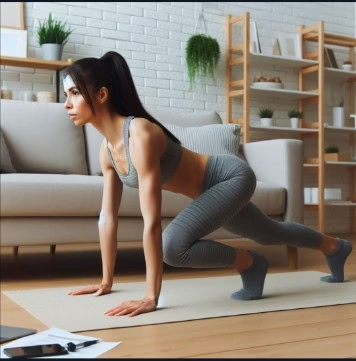
For people with bad knees, there are simple groups of calisthenics they may find best suitable for their condition as covered in another article. Also covered are the best calisthenics for those with back problems, and bad wrists.
References.
- Schoenfeld, Brad J. Squatting Kinematics and Kinetics and Their Application to Exercise Performance. Journal of Strength and Conditioning Research 24(12):p 3497-3506, December 2010. | DOI: 10.1519/JSC.0b013e3181bac2d7 ↩︎
- Van Hooren, B., Peake, J.M. Do We Need a Cool-Down After Exercise? A Narrative Review of the Psychophysiological Effects and the Effects on Performance, Injuries and the Long-Term Adaptive Response. Sports Med 48, 1575–1595 (2018). https://doi.org/10.1007/s40279-018-0916-2 ↩︎

